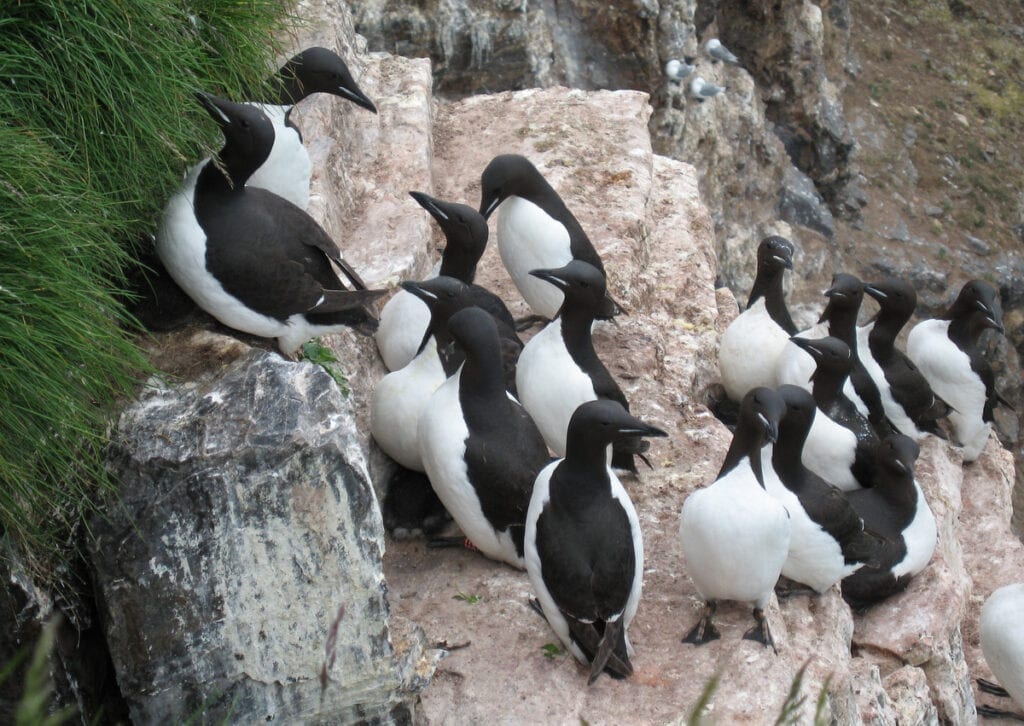The subpolar gyre (SPG): a promising index for ecosystem change in the North Atlantic
The annual survival rate of the Brünnich’s guillemot in Svalbard has decreased since the mid 1990s. The reason for the decline might be the weakening of the SPG (subpolar gyre) and the associated warming of the North Atlantic, which may have reduced prey availability in main wintering grounds.
Since 1997, two years after an abrupt ecosystem change in the Northeast Atlantic, Brünnich’s guillemot colonies in Svalbard have declined by up to 45%, and are under threat of extinction within the next 50 years. The present study examined whether a drop in adult survival rate may explain the population decline. Indeed, the population size of long-lived species such as the Brünnich’s guillemot (they can live for more than 30 years) can be strongly influenced by a change in the adult survival rate, which in turn may be influenced by changes in the environment. By catching, marking and following the marked birds from 1986 to 2011, researchers found that their annual adult survival rate has declined by up to 12% after ecosystem changes in the North Atlantic. These changes have been driven by a weakening of the subpolar gyre (SPG).
Read the article:
A weakened SPG causes an increase in the water temperature and salinity at the wintering grounds for the Brünnich’s guillemots between Iceland and Greenland. Such weakening of the SPG happened in 1995 and likely changed the phytoplankton and zooplankton communities in the area, and further the availability of prey (e.g. fish) for Brünnich’s guillemots. The results from this study suggest that the SPG may be a promising environmental index in ecosystem studies.
Contact person: Sébastien Descamps, Norwegian Polar Institute

